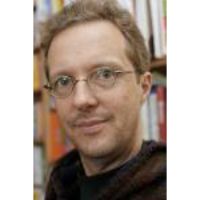
Senior staff editor for Scientific American magazine in New York
George Musser is a senior staff editor for Scientific American magazine in New York. He did his undergraduate studies at Brown University and his graduate studies in planetary science at Cornell. His thesis work, done with Steven Squyres, modeled mantle convection on Venus in order to explain broad plateaus, known as coronae, mapped by the Magellan orbiter. From 1994 to 1998, Musser served as editor of Mercury magazine at the Astronomical Society of the Pacific in San Francisco. Since then, he has been at Scientific American, where he focuses on space science and fundamental physics. He received the 2011 Science Writing Award from the American Institute of Physics and the 2010 Jonathan Eberhart Planetary Sciences Journalism Award from the American Astronomical Society. His first book, The Complete Idiot’s Guide to String Theory, was published by Alpha in 2008.
Talks

I visited KITP as a writer-in-residence from 19 March to 18 May 2012. My main goal was to work on a popular-level book, currently under contract with Simon & Schuster, about various issues in contemporary physics. In addition, I collected numerous ideas for Scientific American articles and generally deepened my understanding of physics and of physicists.
While at the KITP, I conducted one or more interviews with 14 researchers and chatted informally with perhaps twice this number. I also attended 17 talks in the “Bits, Branes, and Black Holes” program, one in the “Multiscale” program, and two physics department colloquia. The seven notebooks that I filled with notes will form the core of several chapters of the book. Additional benefits I had not anticipated in advance were the reading room and online journal subscriptions, which are usually unavailable to those of us not affiliated with academic institutions. I skimmed or read 65 scientific papers during my stay, as well as a number of books.
In addition, I gave three hour-long talks to the KITP faculty, wrote three blog posts for the Scientific American website (which were among the most heavily trafficked of the year to date, and one of which is being reprinted in the July issue of the print magazine), and collected material for others to be written from the office.
Within the community of writers who focus on physics, the Kavli writer-in-residence program is renowned as a true meeting of minds, and I can now confirm from direct experience that it helps to break down the barriers and suspicions that sometimes arise between scientists and journalists.